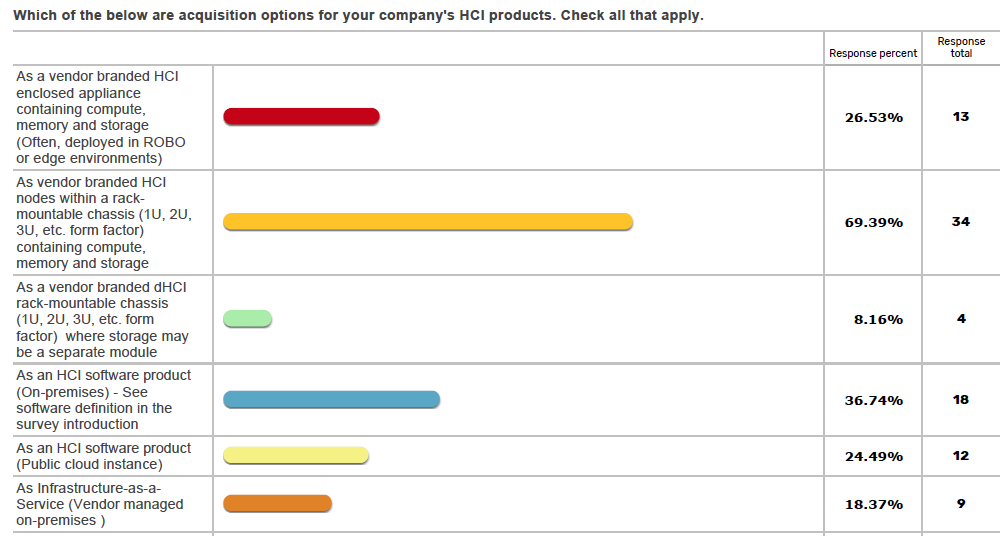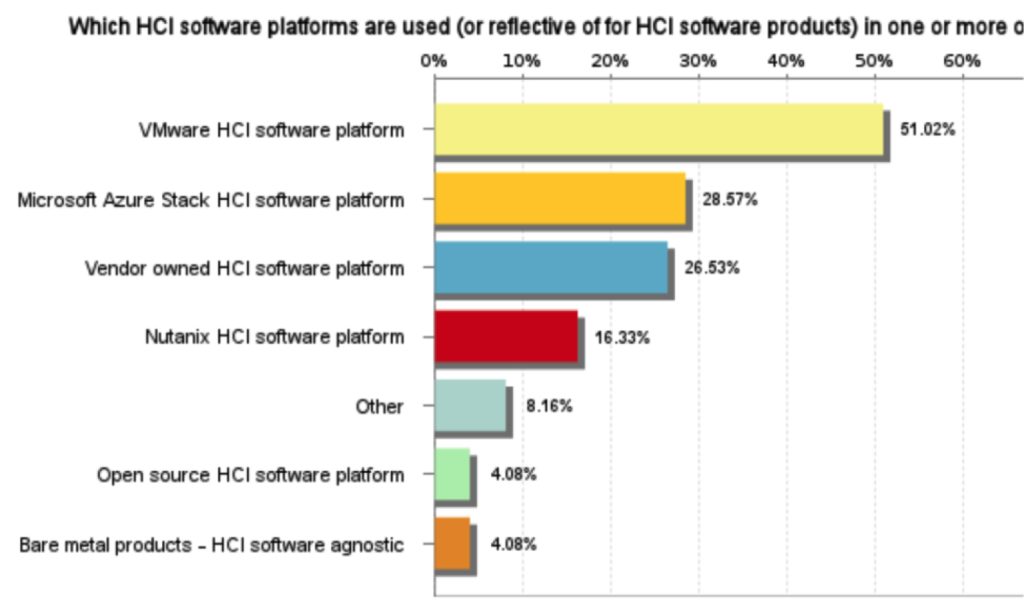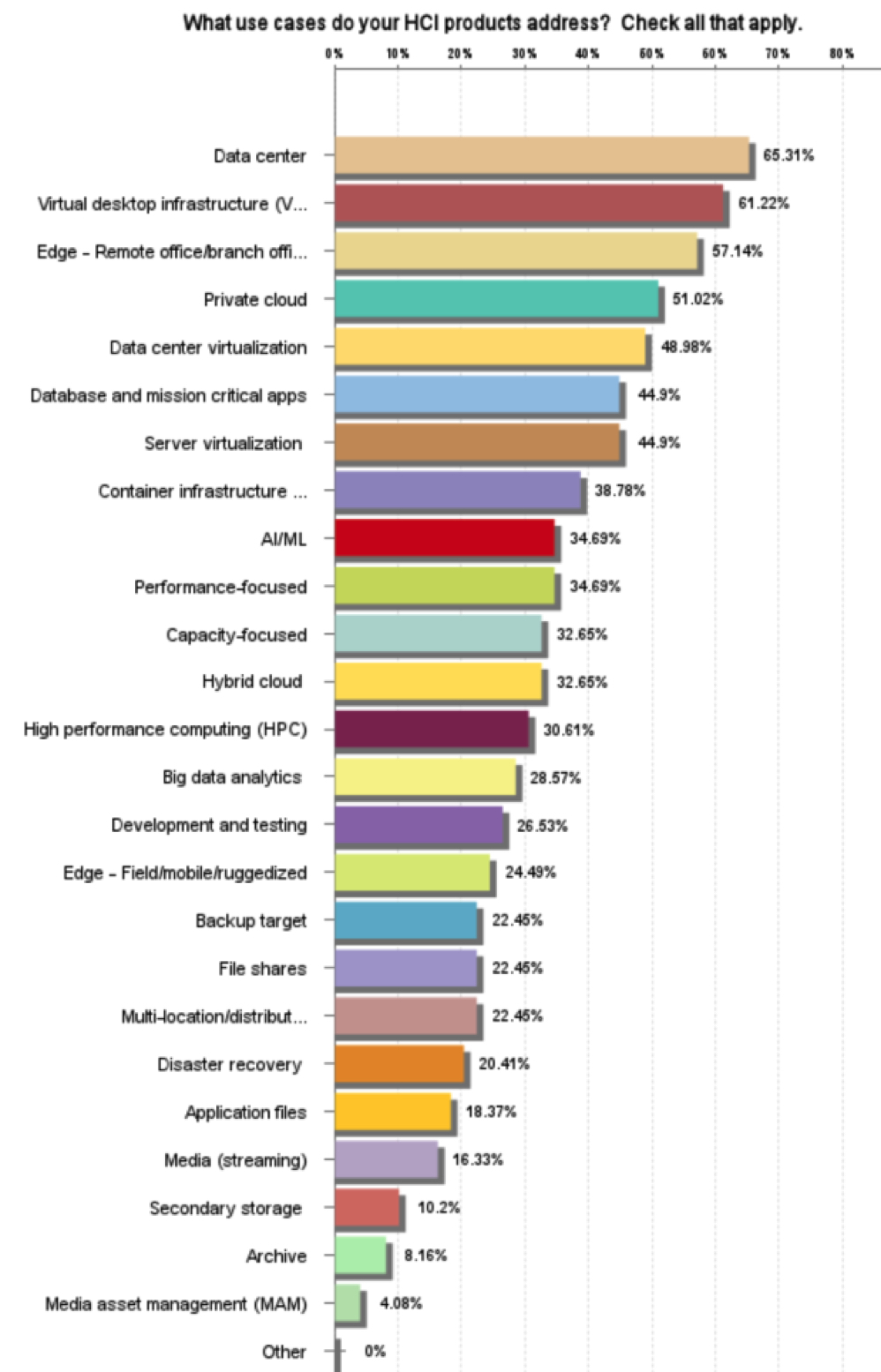Three Insights into Hyperconverged Infrastructure Marketplace
Projected to reach $32 billion by 2028, CAGR of 25%
This is a Press Release edited by StorageNewsletter.com on April 10, 2023 at 2:02 pm![]() This report, written on April 6, 2023, was written by Todd Dorsey, analyst, DCIG, LLC.
This report, written on April 6, 2023, was written by Todd Dorsey, analyst, DCIG, LLC.
Three Insights into the Hyperconverged Infrastructure (HCI) Marketplace
DCIG recently completed its previously announced research into the HCI marketplace. It identified nearly 50 vendors that offer HCI products and anticipates publishing several DCIG TOP 5 reports from research beginning next month. In this article, analysts share several insights from that research.
HCI market growth
HCI concepts and products influence IT infrastructure purchasing decisions. HCI presents possibilities for simplifying IT infrastructure costs and administration. With an expected CAGR of 24.9%, the HCI market is projected to reach $32.19 billion by 2028.
HCI hardware and software offer multiple deployment options
HCI products can generally be divided into HCI software products, HCI hardware products, and integrated (hardware and software) HCI products.
Vendors design HCI software products to discover, virtualize, and manage the compute, storage, and networking of its underlying components. HCI software can be licensed, downloaded, and deployed on commodity hardware, select OEM server platforms, or vendor-branded HCI hardware products. Some HCI software vendors offer deployment within select cloud platforms that integrate with on-premises deployments.

HCI hardware products combine compute, storage, and memory into pre-integrated standalone or rack-mountable appliances. Some vendors offer disaggregated HCI (dHCI) offerings that utilize storage from a separate independent storage array.
As the chart below shows, customers can acquire HCI products in several ways. Customers can purchase software-only solutions (bring-your-own hardware), hardware solutions (bring-your-own [HCI] software), or all-in-one solutions where the vendor pre-integrates the HCI hardware and software. Some HCI vendors offer their HCI solution as a fully managed service.
HCI infrastructure hardware – HCI platorm optimized
HCI hardware vendors build and validate their products for popular HCI software platforms like Nutanix, Microsoft, and VMware. Some HCI hardware vendors offer their own HCI software based on proprietary or open source technologies.
While many organizations prefer to standardize on a single HCI hardware and software platform, business requirements may indicate the need for more than one platform.
Some HCI hardware vendors support a single platform, but many vendors support multiple platforms.
Understanding which HCI software platforms each vendor supports is a key consideration when selecting an HCI hardware provider.

HCI use cases
HCI hardware and software solutions address a range of use cases. The top 4 uses cases identified are:
1. Data center infrastructure
2. Virtual desktop infrastructure (VDI)
3. ROBO
4. Private cloud
Some vendors focus on just one of these top use cases, while others attempt to span the whole range.
The chart below captures use cases for HCI products selected by survey respondents or reflected by marketing material of HCI vendors. In addition use in data centers and branch offices, several vendors offer HCI solutions for harsh conditions where ruggedized equipment is required. Verticals requiring ruggedized equipment range from the manufacturing floor to the cellular communication tower, oil rig, or mobile vehicle.














 Subscribe to our free daily newsletter
Subscribe to our free daily newsletter


